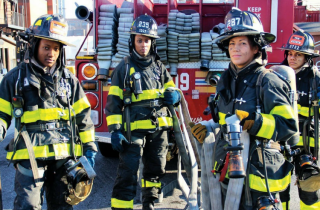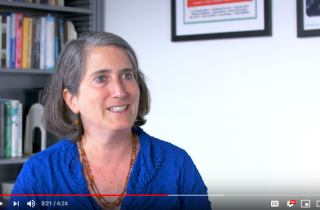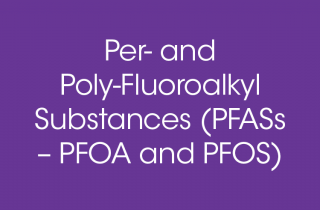California Approves Ban on Toxic Chemicals to Protect Firefighters and Drinking Water
FOR IMMEDIATE RELEASE
SEPTEMBER 30, 2020
CONTACT:
Erika Wilhelm (415) 321-2920 Breast Cancer Prevention Partners
Shannon Flaherty (775) 315-6831 Senator Ben Allen, 26th District
SACRAMENTO — A bill to ban dangerous chemicals was signed into law yesterday in California. Co-sponsored by Breast Cancer Prevention Partners, Senate Bill 1044 by Senator Ben Allen, D-Santa Monica, will ban the manufacture, sale and use of firefighting foam that contains chemicals known as per-and poly-fluoralkyl substances, or PFAS.
Used in commercial and industrial products like carpet, clothing and non-stick coatings since the 1950s, PFAS resist heat, stains and water. PFAS is used in firefighting foam and commercial products and is linked to health problems such as cancer, hormone disruption, kidney and liver damage, thyroid disease, birth defects, harm to developing infants and children, and drinking water contamination.
Unfortunately, carcinogenic PFAS contamination has been found in drinking water around the country, including water sources for drinking water systems that serve at least 19 million people statewide. Much of the contamination can be traced back to the use of PFAS-containing firefighting foam. The widespread use of this foam leaches into the state’s water supply. The chemicals in the foam also seep into firefighters’ bodies, causing numerous health problems.
“We ask our brave firefighters day in and day out to put their lives at risk for our safety,” said Senator Allen. “It’s only right to put an end to further jeopardizing their health by continuing their exposure to these harmful chemicals. There are better alternatives out there and now we can begin moving toward those better alternatives. I’m grateful to the Governor for prioritizing the health of our state’s firefighters and keeping our drinking water clean.”
Firefighters are exposed to many substances linked to health problems, including PFAS. Multiple studies have demonstrated that firefighters are at a higher risk for cancer or serious illness through occupational exposure to dangerous substances. PFAS is linked to an increased risk of cancer, and firefighting protective gear contains PFAS. Firefighters have been found to have abnormally-elevated levels of PFAS chemicals in their blood.
“Firefighters put their lives on the line daily to protect the public and risk exposure to hazardous materials throughout their careers,” said Brian K. Rice, President California Professional Firefighters. “Exposure to PFAS through the use of Class B firefighting foam is both dangerous and unnecessary, causing serious health effects that can be prevented with safer alternatives.”
Currently, there are alternatives to PFAS that are cost-saving and effective. According to an international independent expert panel, all PFAS-based foam should be phased out over time, and that non-PFAS foams are viable and cost effective. Globally, other countries have adjusted. London’s Heathrow Airport, one of the largest in the world, and all 27 major Australian airports, have already successfully transitioned to PFAS-free firefighting foam.
Other U.S. states have enacted bans on most uses of PFAS-containing “Class B” firefighting foam, including New York, Washington, Colorado and New Hampshire.
Current federal law requires the Department of Defense (DOD) to phase out the use of PFAS-containing firefighting foam at military installations. The phase-out does not begin until 2024, however, and the restrictions only affect military uses.
The ban will go into effect on January 1, 2022, but the bill exempts airports with federal requirements for using PFAS foams and provides one year to transition to alternatives once the federal requirements are rescinded. The bill also provides additional time and flexibility for the industry to transition away from PFAS foams for specific uses and ensures any uses beyond 2022 have strong containment requirements to prevent release into the environment.
“PFAS chemicals harm people and the environment…forever. These persistent chemicals have been linked to an increased risk of breast cancer, as well as numerous other negative impacts to human health,” said Nancy Buermeyer, senior policy strategist for Breast Cancer Prevention Partners. “Ending the use of PFAS chemicals in firefighting foam is an important first step toward reducing the contamination of our water and environment, protecting our firefighters and preventing breast cancer. We thank Sen. Allen for his tremendous leadership and Governor Newsom for signing this critical legislation into law.”
“Governor Newsom has taken a bold step to protect the environment and human health from the threats of PFAS contamination,” said Anna Reade, staff scientist at NRDC, (Natural Resources Defense Council). “Firefighting foam is a major source of contamination, yet there are safer alternatives available today that we can use to protect future generations. SB 1044 will end the unnecessary use of PFAS in firefighting foam and protect our firefighters and communities from these toxic “forever” chemicals.
Bill Allayaud, California Director of Government Affairs for the Environmental Working Group, stated, “Californians are exposed to toxic PFAS chemicals in too many ways, almost all of which they are not aware of. SB 1044 will address one of the most important exposure pathways – PFAS in groundwater due to runoff from PFAS foam. This source can mean PFAS in our drinking water which is absolutely a health concern.”
“Too many communities are learning the hard way that continuing to pump PFAS into the environment will not only contaminate our water, but add tremendous costs to water systems”, said Andria Ventura, Toxics Program Manager for Clean Water Action. “SB 1044 will stop one of the largest sources of PFAS in California. Its importance can’t be overstated.”
###
Breast Cancer Prevention Partners (BCPP) is the leading national science-based policy and advocacy organization working to prevent breast cancer by eliminating our exposure to toxic chemicals and radiation.
Clean Water Action organizes strong grassroots groups and coalitions, and campaigns to elect environmental candidates and to solve environmental and community problems.
Environmental Working Group is a non-profit, non-partisan organization dedicated to educating and inspiring people, businesses, and governments to make better decisions and to take action to protect health and the environment.
Natural Resources Defense Council (NRDC) is an international nonprofit environmental organization with more than 3 million members and online activists. Since 1970, our lawyers, scientists, and other environmental specialists have worked to protect the world’s natural resources, public health, and the environment. NRDC has offices in New York City, Washington, D.C., Los Angeles, San Francisco, Chicago, Bozeman, MT, and Beijing.
Types: Press Release



